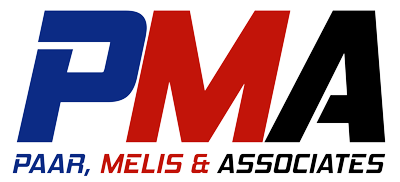When people hear the term “business owner,” they often imagine someone who calls the shots, reaps the rewards, and enjoys the freedom to spend time as they please. However, for many shop owners, the reality is far different. Instead of being independent business leaders, they may just be highly paid employees tied to the daily operations of their shop.
Hunt Demarest, CPA with Paar Melis and Associates, recently unpacked this idea on his podcast, Business by the Numbers. The crux of the discussion? If your shop can’t run profitably without you showing up every day, you’re not a business owner—you’re an overpaid employee.
Let’s break down this concept and explore how shop owners can transition from being tied to their business to achieving true business independence.
What Does It Mean to Be an Overpaid Employee?
The distinction between a business owner and an overpaid employee boils down to one key question:
Did you need to show up to make that profit?
If the answer is yes, you’re likely functioning more as an employee than a true business owner. This realization might come as a surprise, especially for those earning six-figure incomes. But to be a true business owner, your shop should operate effectively without your daily, hands-on involvement.
Demarest highlights two types of shop owners he works with:
- Owner A earns 35% net income but works over 2,500 hours annually (much more than a standard full-time employee).
- Owner B earns 15% net income but hasn’t worked in their shop for over a year, as their business operates on autopilot.
At first glance, Owner A might seem more successful due to a higher profit margin. But they’re also working harder than most employees, effectively trading hours for dollars. Owner B, on the other hand, demonstrates what true business ownership looks like—freedom and independence.
The Shocking Reality of Hourly Rates
To get an honest picture of your role, Demarest suggests calculating your owner hourly rate. This process includes:
- Adding up your salary, perks, net income, and any personal expenses covered by the business.
- Dividing that total by the number of hours you work annually.
Many shop owners discover that their hourly rate is actually less than what they pay their top technician—a humbling reality check. If this is you, it’s time to rethink your approach to running your business.
The Trade-Off Between Profit and Freedom
For many shop owners, maximizing profit often requires working longer hours and staying deeply involved in daily operations. While this approach might lead to short-term financial success, it often comes at the cost of freedom, burnout, and an inability to scale the business.
Demarest emphasizes that successful business owners intentionally trade some profit for independence. By delegating, hiring skilled staff, and building systems, they’re able to step back and focus on the bigger picture while still maintaining a healthy (though lower) profit margin.
This trade-off isn’t a loss—it’s an investment in long-term sustainability.
Steps to Transition From Overpaid Employee to Business Owner
Shifting from employee to business owner isn’t an overnight process, but it’s achievable with the right strategies. Here’s how to get started:
1. Hire a Manager
Bringing in a manager to oversee daily operations is one of the most effective ways to reduce your involvement. This allows you to focus on strategy rather than putting out fires.
2. Delegate Low-Value Tasks
Assess your daily responsibilities and hand off tasks that don’t require your expertise—like scheduling, basic customer interactions, and admin work.
3. Build Redundancy
Create systems and processes that allow your shop to run smoothly, even in your absence. This might include cross-training staff or investing in technology to streamline operations.
4. Track Your Hourly Rate
Regularly calculate your owner hourly rate and aim to increase it over time by reducing the hours you work.
5. Invest in Training
A well-trained team is crucial for a self-sustaining shop. Invest in your employees’ development to ensure they can manage challenges independently.
6. Rethink Your Business Model
Refocus your role from being hands-on to driving growth and strategy. This shift will prepare your business for future scaling opportunities.
7. Set a Timeline for Independence
Define clear goals and deadlines for reducing your involvement. Whether it’s stepping back from daily tasks in six months or fully delegating operations in two years, having a timeline keeps you accountable.
What Does True Business Ownership Look Like?
A true business owner is someone whose shop can function profitably without their constant presence. If your shop loses 30% (or more) of revenue when you’re away, you’re still functioning as an employee—not an owner.
Ownership means building a business that thrives independently, giving you the freedom to focus on growth, new opportunities, or even just enjoying more time away from work.
Evaluate Your Business Today
If you’re unsure where you stand, start by calculating your hourly rate and asking yourself the tough questions:
- Could my shop run without me for a week? A month? A year?
- Am I intentionally trading profit for more personal freedom?
- What systems and processes do I need to put in place to reduce my involvement?
Once you’ve answered these questions, it’s time to create a plan for more independence—and ultimately, true business ownership.
Paar Melis and Associates can help. With extensive expertise in the automotive industry, we’ve guided countless shop owners toward financial success and business freedom. Contact us today to see how we can support your goals.
Start moving from overpaid employee to empowered business owner—on your terms.

